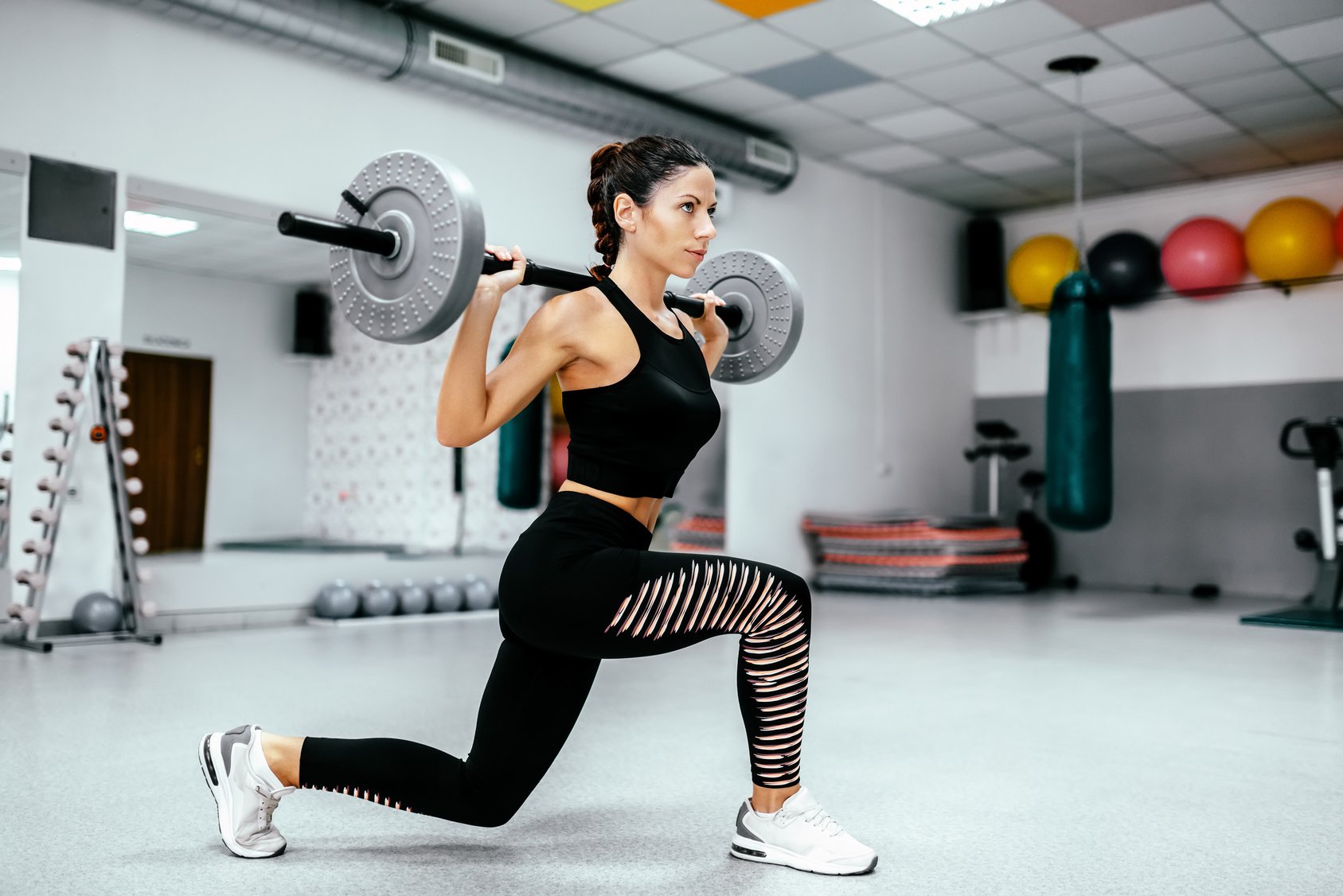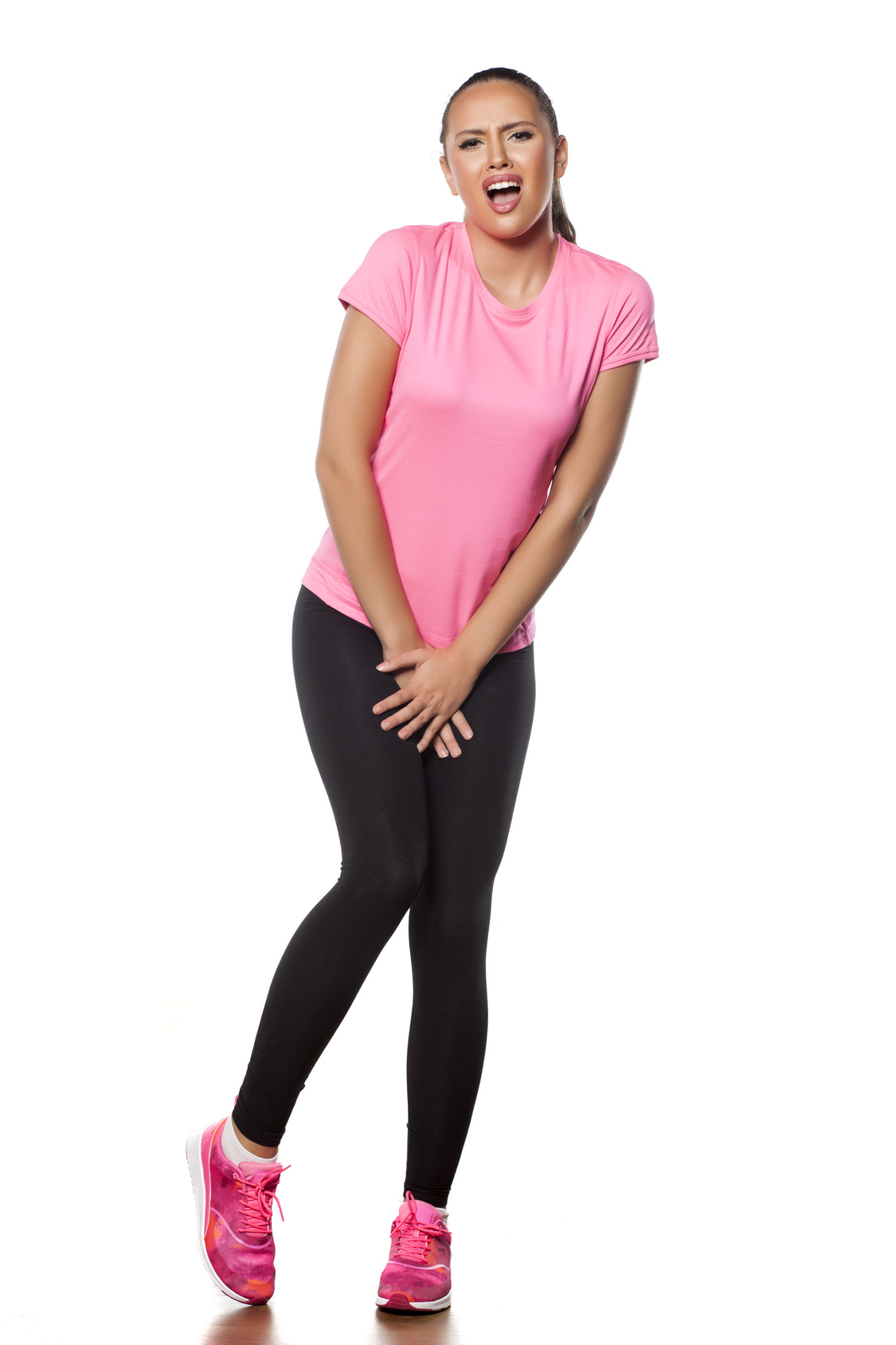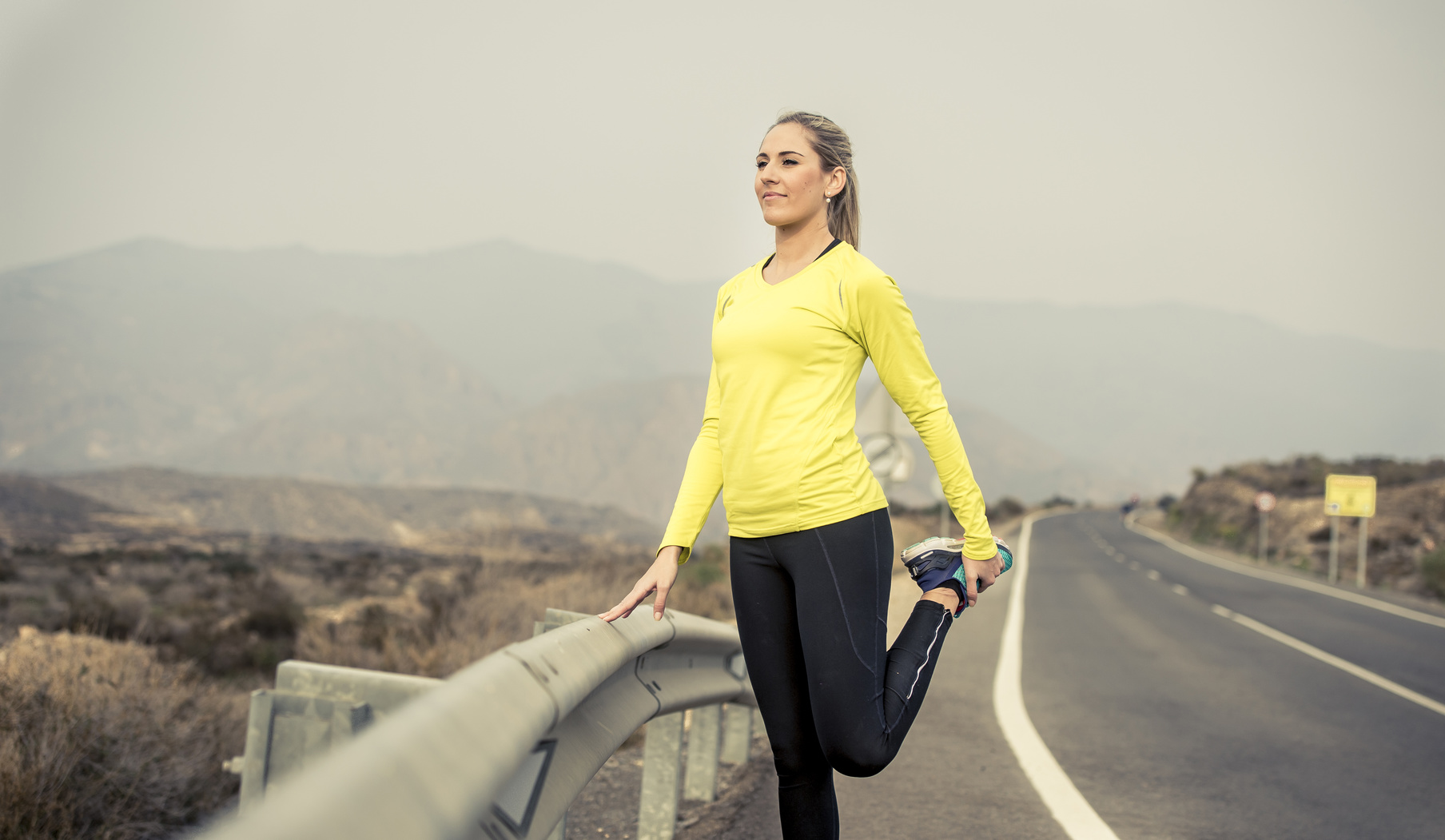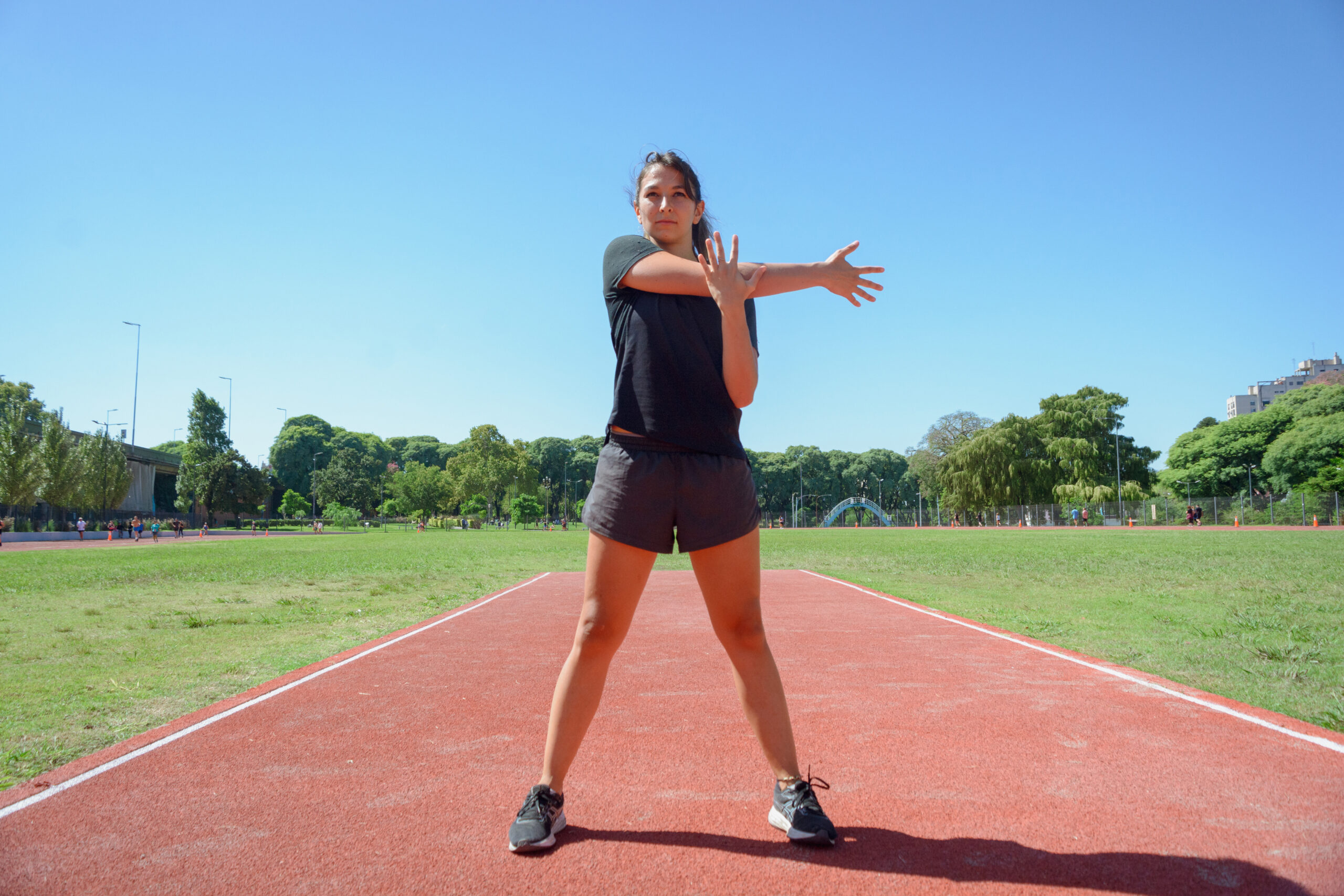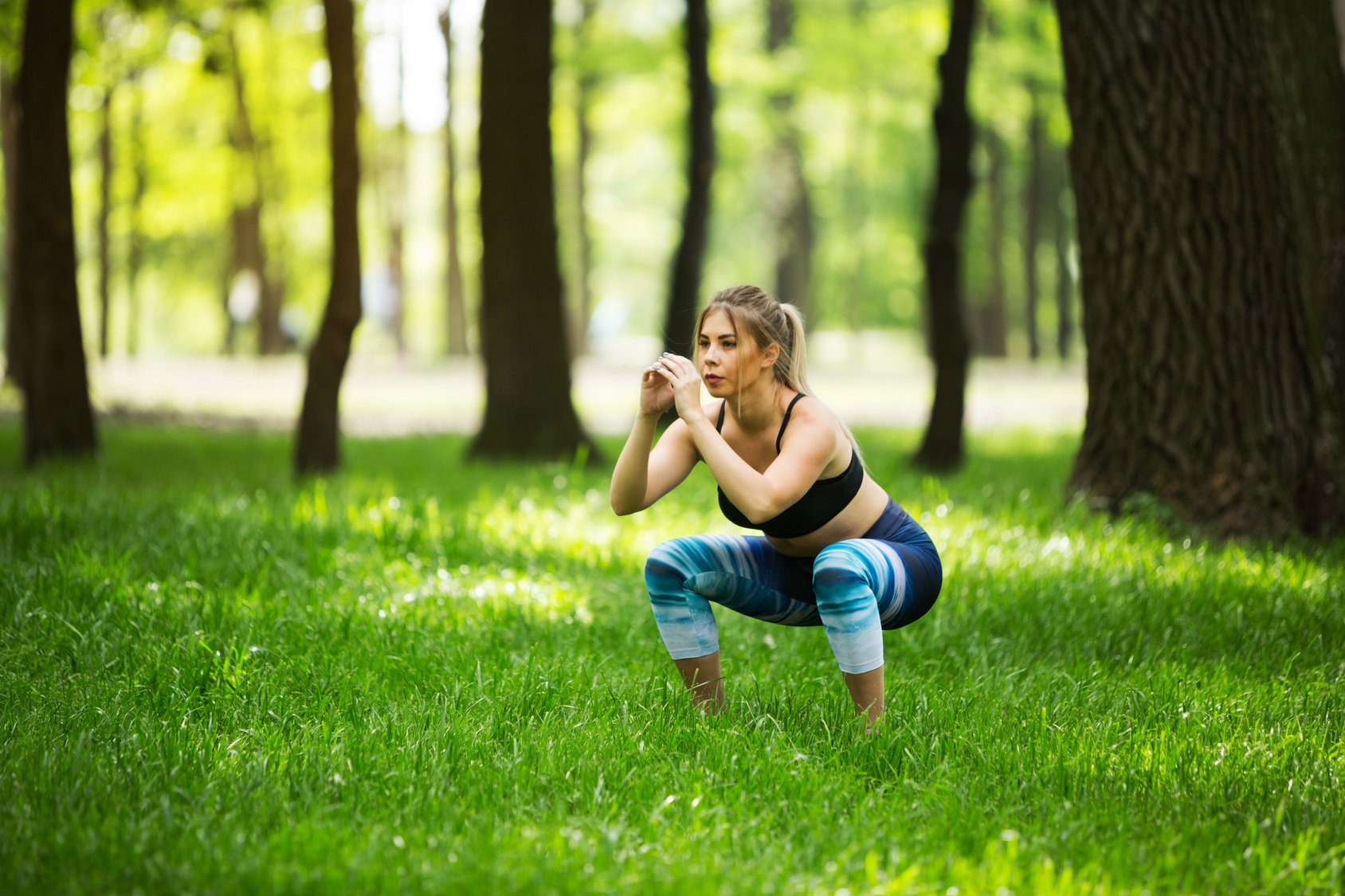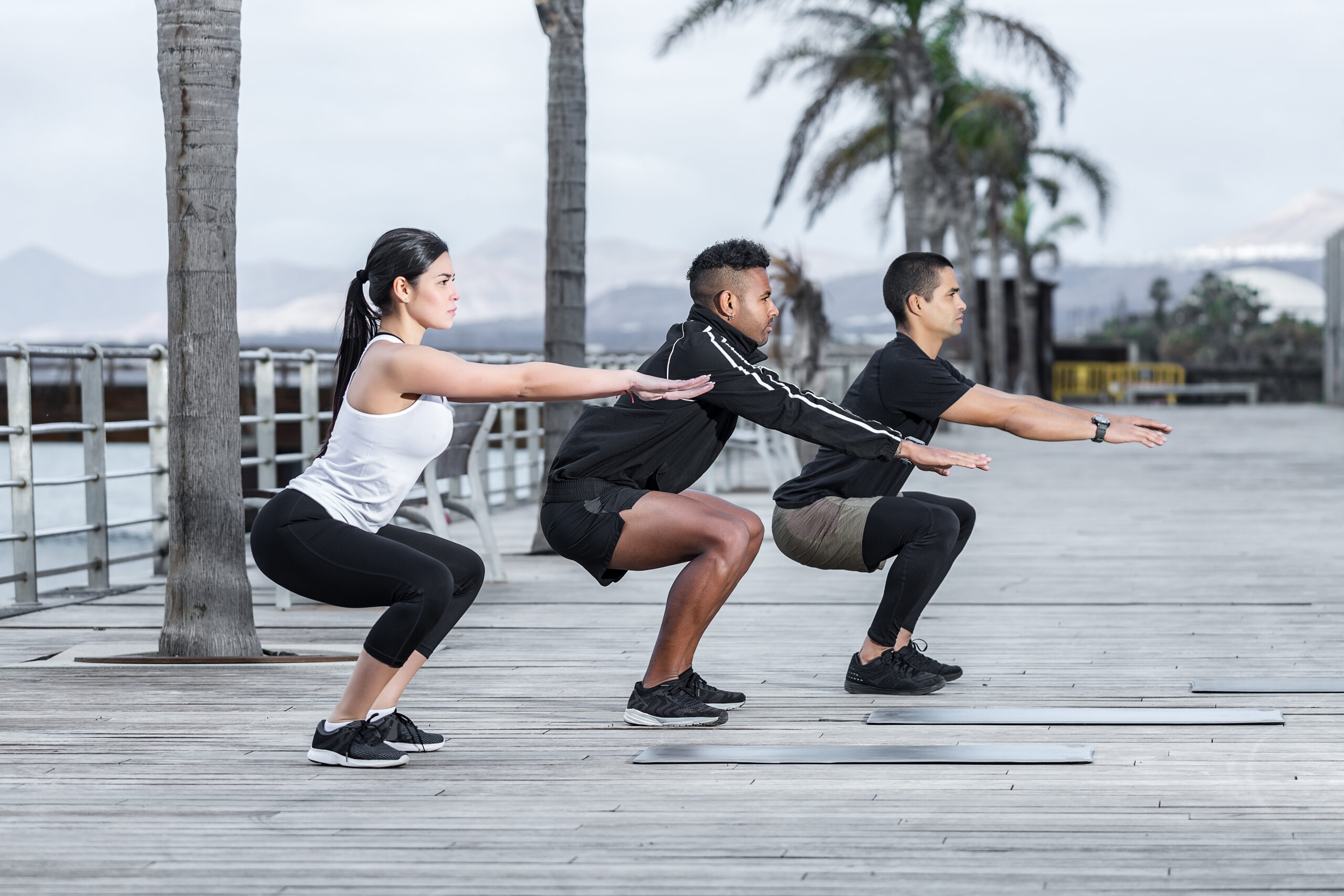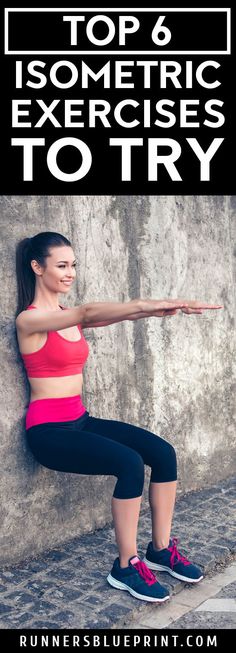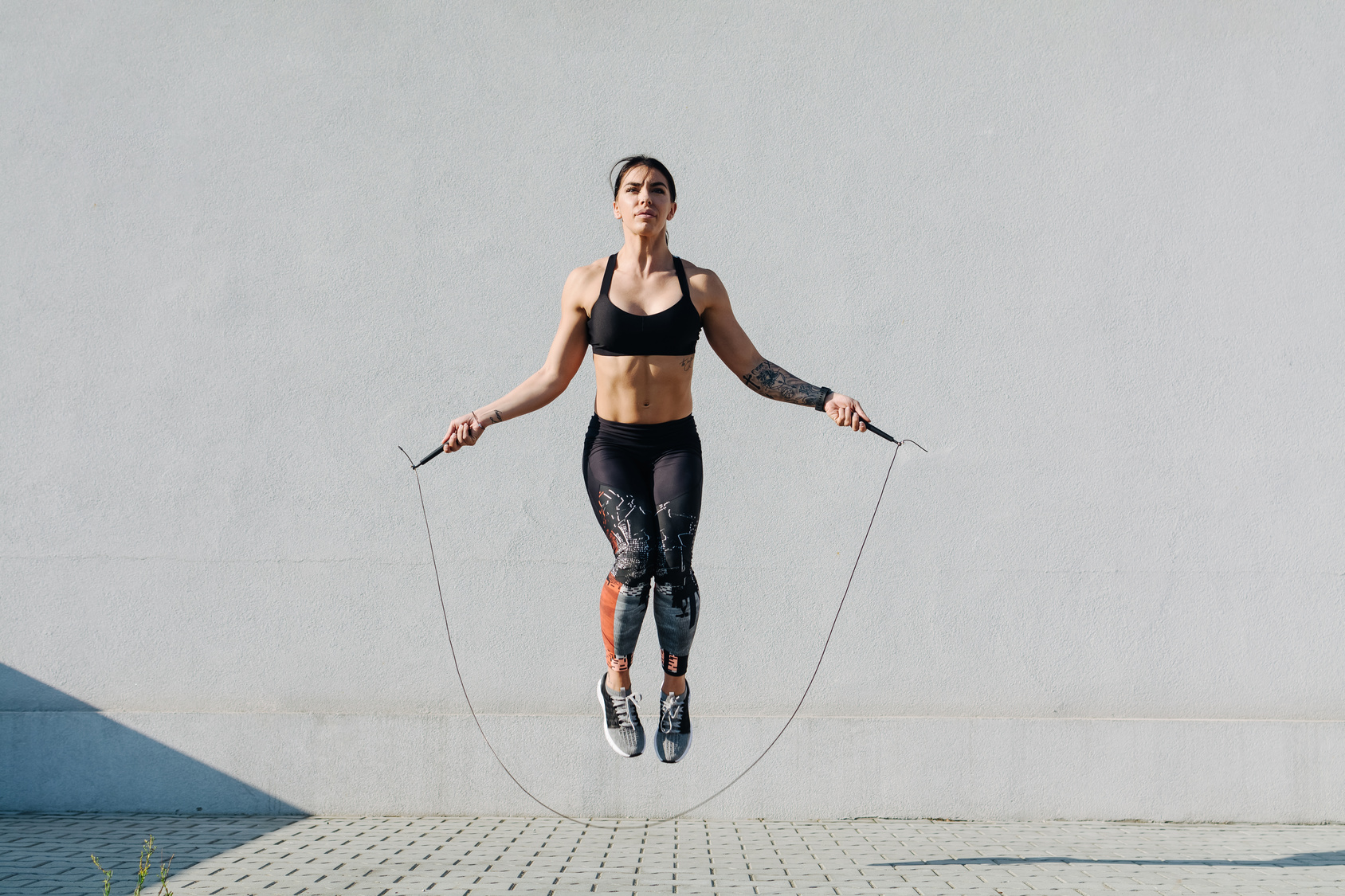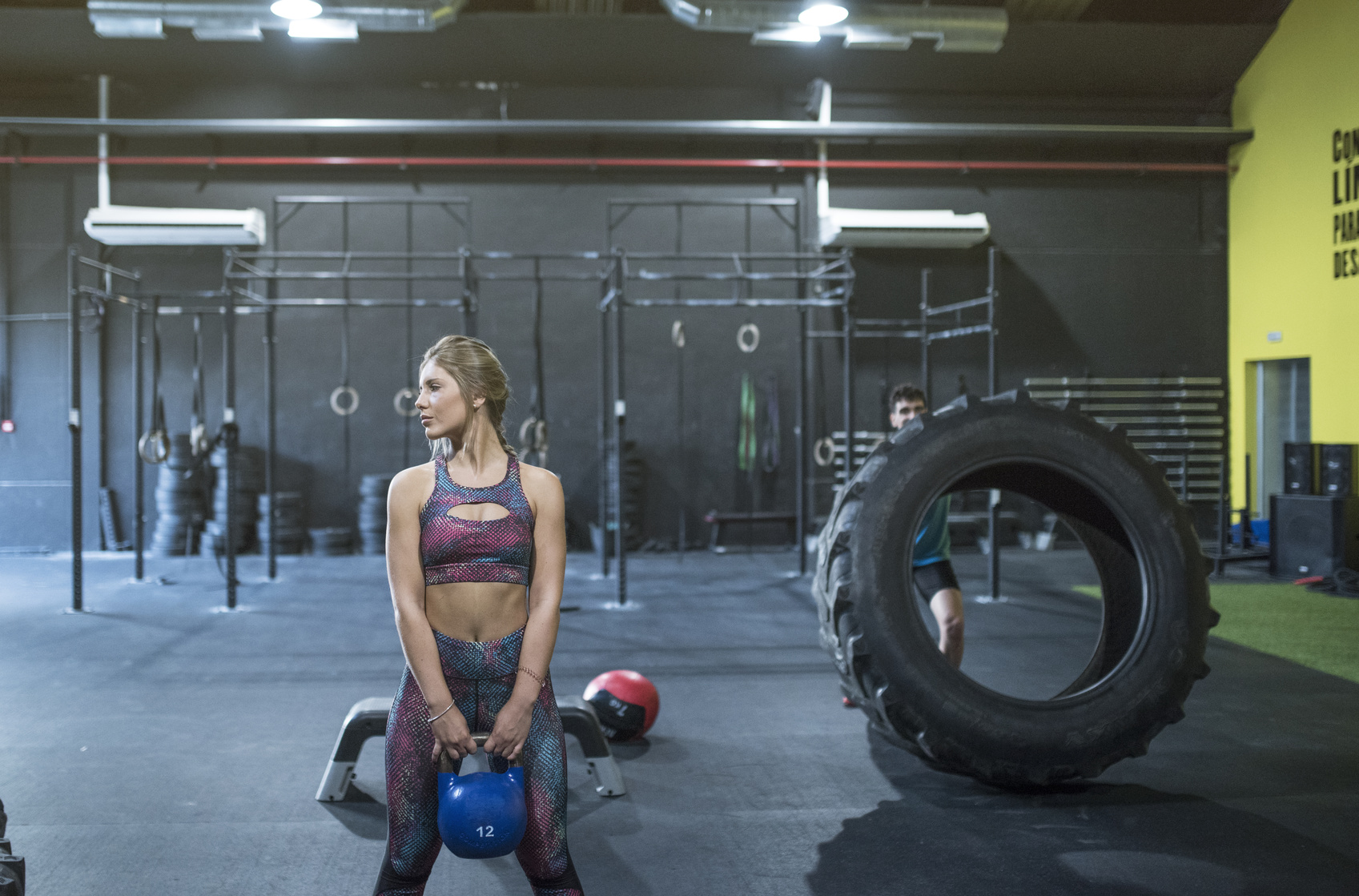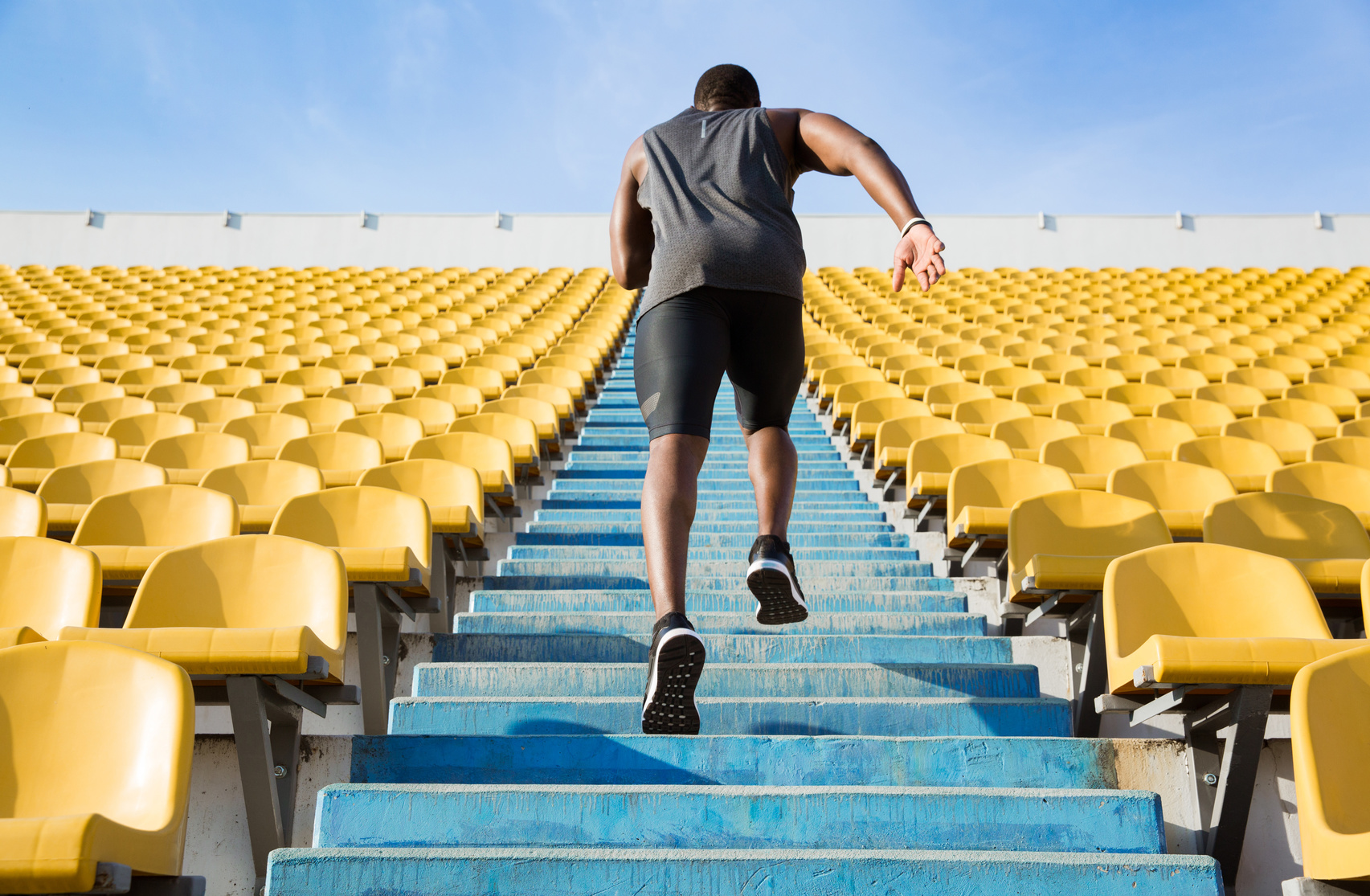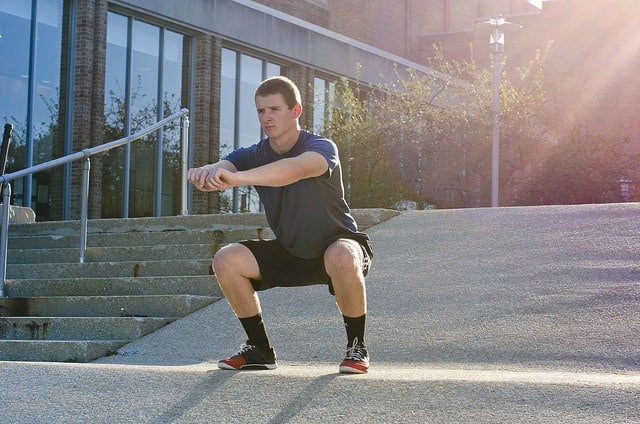If you’re into lunges, whether it’s weighted lunges, pulse lunges, or alternating lunges, then you have come to the right place.
The fact is, lunges are one of my favorite strength exercises of all times: The ol’ good lunges, along with 10 variations you can do to change the emphasis on different parts of your lower body.
They are ideal for runners because, to some extent, they are just like running.
When you perform lunges, your body is slightly off balance with more emphasis on a single-leg motion at a time, just like when you run.
Not only that, lunges target the main running muscles—your hamstrings, quadriceps and the glutes.
What Do Lunges Work?
Here is a short list of the benefits you can reap from doing lunges on a regular basis.
Strengthen. Lunges are some of the ideal leg strengthening exercises you can do to become a faster and injury-free runner over the long haul.
The typical lunge targets the quadriceps, hamstrings, and glutes muscles like nothing else.
Building strength and power in these muscles can help you boost sprinting speed as they work together to pull your body in a forward motion.
Plus, since lunges require balance, you will also be indirectly working on strengthening your stability muscles—mainly the glute minimus and glute medius.
Protect against injury. Strong leg muscles can help bulletproof your body against common overuse running injuries.
For instance, strengthening the muscles around your knees, think hamstrings, quads and calves, can protect your knees form the high impact nature of running, and reduce the strain placed on them while hitting the pavement.
Balance & coordination. Lunges are some of the best leg exercises you can do to improve coordination and balance.
Enhancing your single-leg balance is key for preventing injuries such as ankle sprains.
Increase stride length. Lunges can also help you increase your stride length, which ultimately will help you boost your speed.
In fact, according to a study published in the “Journal of Strength and Conditioning Research” in 2009, lunges (the forward and the jumping variations) have been shown to increase hamstring strength and running speed.
Warm-up. This is a powerful dynamic exercise you can use as a warm-up, because they can fire up your hamstrings and quadriceps, enhance lower limb function, and increase body temperatures. This exercise is also a part of the Myrtl routine.
Convenient. Lunges are really practical and convenient and can be done almost anywhere, given that you have enough space and the motivation to do them.
Scalable. You can also easily modify them to fit with your own fitness needs and level.
You can make them more challenging by adding weights, performing more reps, increasing the width of the lunges, or doing some of the advanced variations I’m sharing with you below.
Many variations. What I really love about lunges, and just like the push-ups, squats and planks, that it’s nearly impossible to grow bored with them because there are so many variations and ways of doing them.
The 10 Lunges Variations to Try
This post outline 9 types of lunges you can add to your strength crosstraining workouts.
That’s a lot of variations, but if you are like me then you surely realize that variety is the spice of life.
1. The Basic Lunge
This is the standard lunge.
Use this one to master proper lunge form and to target the hamstrings and glutes.
Proper Form
Assume an athletic position with feet hip width apart, back straight, core engaged.
Next, take an exaggerated step forward with your right foot, then lower your left knee within an inch of the floor.
Next, use the muscles of your left leg to pull yourself back up into the starting position, then continue forward alternating between the right and left leg.
Make sure to keep your upper body engaged but in a neutral position, just like when standing with a proper posture.
Allow for no forwards nor backward leaning.
And don’t twist either.
Embrace your core by pulling your belly button back toward your spine. Focus on reaching ahead of your body as you as possible while moving in a straight line the entire time.
Complete 12 lunges with each leg to complete one set.
2. Weighted Lunges
Benefits
To make the basic lunge more challenging, add weights to it.
You can up the ante by using a set of challenging dumbbells, kettlebells or a loaded bar.
You can also use heavy gym bag or your kid, if they don’t mind.
Additional resource – The Myrtle routine
Proper Form
Begin by holding a dumbbell in each hand with arms fully extended overhead.
If you are using a barbell, then to rest it across your upper back and have control over the weight the entire time.
Next, step forward into a deep lunge with your right leg, then drop deep into the lunge by bending both knees to a 90-degree angle.
Please, keep your chest up and torso upright throughout the movement.
No hinging forward is allowed.
Keep your core engaged the entire time to help you keep good form and protect your lower back.
Last up, bring your left leg forward and switch sides to complete one rep.
3. Jumping Lunges
Benefits
Add a plyometric effect to your lunges by incorporating this powerful move into your training arsenal.
Jumping lunges are key for increasing explosive strength and endurance in your lower body, which can help you run faster, and more efficiently.
This is a high intensity exercises, so pace yourself and be careful.
Proper Form
Start in a basic lunge position with your right leg in front.
Next, lower down until your knees almost touches the floor, push through both feet then quickly explode upward so that your feet come together and switch your legs midair to end up in a lunge with your left leg in front.
Keep switching legs in this manner as fast as you can for one full minute to complete one set.
4. Backwards Lunges
Benefits
This is the backward way of doing the basic lunge.
The backwards lunge emphasizes the quads and glutes more than any other muscle.
Proper Form
https://www.youtube.com/watch?v=LWaVpSqXDE4
Assume an athletic position, then take a large and controlled step backwards with your right leg, landing on the ball of the foot, then bend both knees until they are bent at a 90-degree angle.
Lower your hips until your front thigh is parallel to the floor with the lead knee positioned directly over your ankle.
Make sure your left knee is over your left ankle.
Last up, extend your knees and hips and press back up to standing position, then switch sides.
Continue alternating legs for 24 reps total to complete one set.
Additional reading – How to Avoid Running Injury
5. Reverse Lunge and Kick
Benefits
This one takes the above a variation a level higher and it’s great as a warm-up exercise as well.
Plus, it’s a great dynamic stretch for your hamstrings and hip flexors.
Proper Form
Stand tall with back straight and core engaged.
Then step back with your right foot coming into a deep lunge, and bending both knees to a 90-degree angle.
That’s your starting position.
Next, to perform this variation, shift your weight into the left foot and press your left heel into the floor as you push off with your right foot, kicking your right leg up and out in front you (like a kickboxing move) and touching your right toes to your left hand (if you can).
Last up, return to the lunge position in a slow and controlled manner.
Switch sides to complete one rep.
Aim for 12 reps to complete one set.
6. Lateral Lunges
Benefits
Also known as the side lunge, this variation is key for building strength in the abductors and hip stabilizing muscles.
This move also improves flexibility in the hamstrings and hip flexors.
Proper Form
https://www.youtube.com/watch?v=Kg0cMxAbKV8
From a standing position, step your right foot directly out to you right side.
Next, bend your right knee and sit your hips back, while keeping your left leg extended, and both feet flat on the floor the entire time.
Focus on pushing your hips back as if going to sit down on a low chair and keep your foot flat on the ground the entire time.
Last, and with a smooth and effortless transition, press back up to starting posting by pushing with your right leg.
Then repeat on the other side.
Aim for 10 reps on each side to complete one set.
8. Lunge with Rear Leg raise
Benefits
This variation ups the ante with your stability and balance while hitting hard the glutes and hamstrings.
Proper Form
Start by performing the standard lunge with your right leg forward.
Next, while engaging your core and extending your right leg, hinge forward at the hips and lift your back leg straight up until it’s parallel to the floor.
Make sure to form a straight line from your head to your left heel.
Last up, return to standing position and switch sides.
Aim for 8 reps on each side to complete one set.
9. Step-up and Lunge
Benefits
This move will come in handy if you do any type of uphill running.
In fact, the step-up and lunge is one of the best runners oriented strength exercises that there is.
This move can also help you jump higher, sprint faster and build some serious muscles in your lower body.
To perform this variation, you will need a step or a box about mid-shin height.
Proper Form
Begin by stepping your right foot onto the box or step, while the left foot is firmly planted on the ground and stretched back into a lunge position.
Next, look forward, engage your core, push through your right heel, then stand all the way up and bring your leg left to a high knee.
Then move your leg back to starting position in slow and controlled manner and lower down into a deep lunge without wobbling.
Do 8 to 10 reps on each side to complete one set.
You can make this move more challenging by holding a dumbbell in each hand by your sides.
10. Pulse Lunges
Benefits
This one is ideal if you are looking to build endurance in you all of your lower leg muscles without moving much.
The pulse can teach you a lot of keeping yourself in check and under control while you feel the burn.
Proper Form
Assume a standard lunge position with your right leg as the lead leg.
Next, begin pulsing by lowering down and up about 3 inches repeatedly until you have performed all reps.
If you are starting to feel the burn and legs start shaking during this exercise, then you are in the right place.
This is what’s supposed to happen.
Perform 16 to 20 pulses in the low position on each side to complete one set.
New to Running? Start Here…
If you’re serious about running, getting fit, and staying injury free, then make sure to download my Runners Blueprint Guide!
Inside this guide, you’ll learn how to start running and lose weight weight the easy and painless way. This is, in fact, your ultimate manifesto to becoming a faster and a stronger runner. And you want that, don’t you?
Click HERE to check out my Runners Blueprint System today!
Don’t miss out! My awesome running plan is just one click away.
Conclusion
And that’s it for today. I hope you like the above 10 lunge variations. Just make sure to start doing them ASAP.
In the meantime, thank you for reading my post.
Feel free to leave your comments and questions below.
David D.

